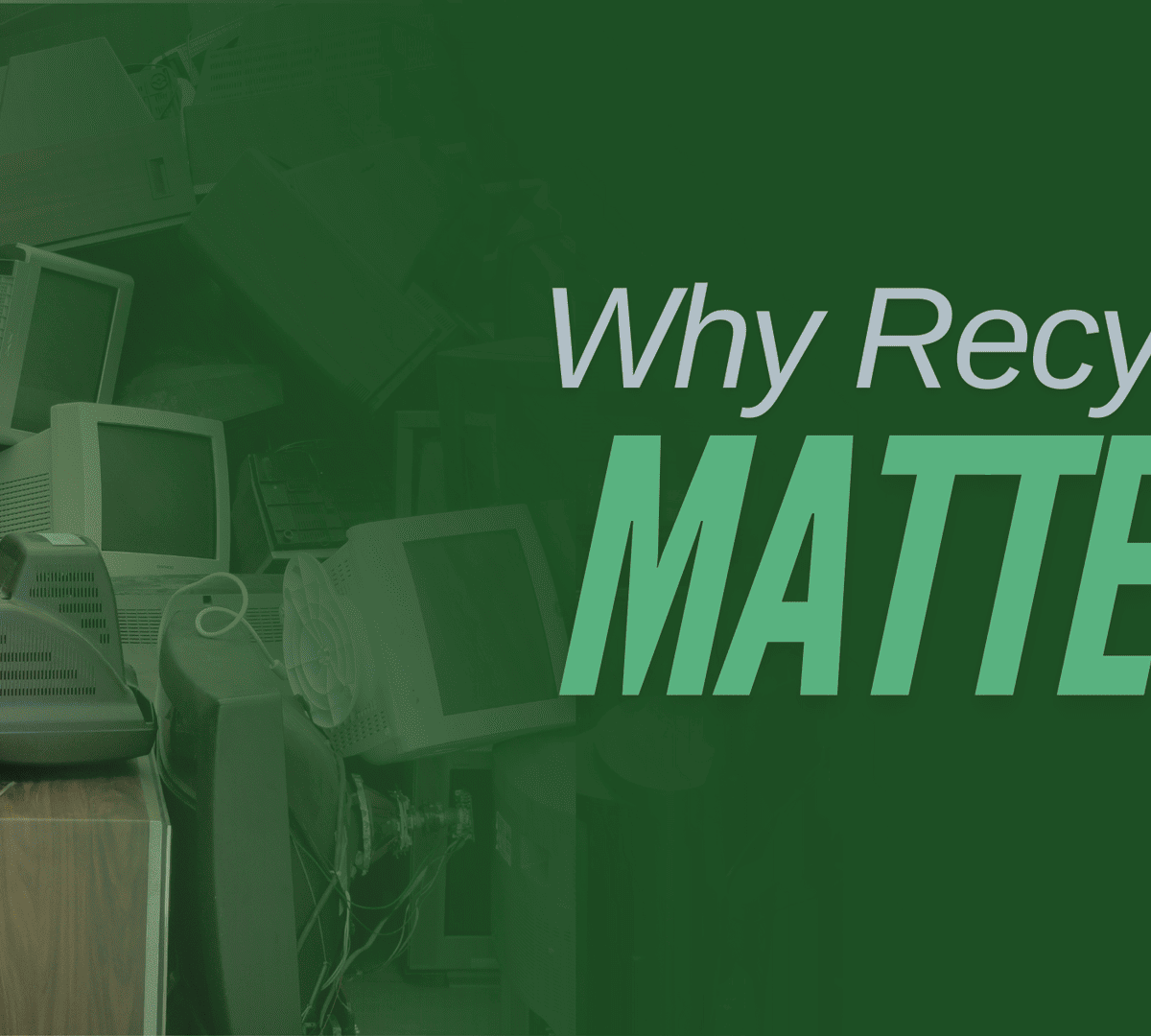As technology advances at a rapid pace, electronic devices are becoming obsolete faster than ever before. As a result, electronic waste (e-waste) is one of the fastest-growing waste streams globally. According to the United Nations, the world generates more than 50 million metric tons of e-waste annually, a number that continues to rise as we upgrade and replace older devices. While the benefits of new technology are undeniable, the environmental consequences of improper disposal of e-waste can be severe. Responsible e-waste recycling is a critical component in managing this issue. It ensures that valuable materials are recovered, hazardous substances are safely disposed of, and the overall environmental impact is minimized. Let’s dive into why e-waste recycling matters and how it contributes to a more sustainable future.
The Growing Problem of E-Waste
E-waste refers to discarded electronic devices, such as computers, smartphones, televisions, and other tech products that have reached the end of their useful life. When improperly discarded, e-waste can pose significant risks to the environment and human health. Many electronic devices contain toxic substances like lead, mercury, cadmium, and brominated flame retardants, which can leach into the soil and water, contaminating ecosystems and posing long-term health risks.
Key statistics about e-waste:
- Only 20% of e-waste is recycled through certified programs, while the rest ends up in landfills or informal recycling operations.
- In landfills, e-waste contributes to pollution, as harmful chemicals leach into the ground and water.
- 60% of toxic waste in landfills comes from e-waste, despite only making up 2% of the total waste by weight.
These statistics highlight the growing need for businesses and individuals to adopt responsible e-waste recycling and proper disposal practices.
The Dangers of Improper E-Waste Disposal
Improper e-waste disposal, such as dumping electronics in landfills or incinerators, can lead to severe environmental and health risks. Here’s a breakdown of the primary concerns:
- Toxic Chemical Leaching
Many electronic devices contain hazardous chemicals that can seep into the environment if not disposed of properly. For example:- Lead in old CRTs and certain batteries can contaminate soil and water if improperly disposed of, causing neurological damage, especially in children.
- Mercury is present in older flat-panel displays, fluorescent lamps, and circuit boards. If released into the environment, mercury can pollute water supplies and harm aquatic life.
- Cadmium in older rechargeable batteries is highly toxic, causing kidney damage and lung cancer with prolonged exposure.
- Air Pollution from Incineration
When e-waste is burned or incinerated, it releases toxic fumes and particulates into the air. These fumes contain harmful chemicals like dioxins, furans, and heavy metals that can have adverse effects on human health, including respiratory problems, cancer, and reproductive issues. - Resource Wastage
Electronic devices contain valuable resources, such as gold, silver, copper, and palladium, which are often discarded in landfills when not properly recycled. By not recycling e-waste, we lose these valuable materials, creating a demand for new mining operations that harm the environment and consume more energy.
The Benefits of E-Waste Recycling
E-waste recycling is a responsible way to manage obsolete electronics while minimizing environmental harm. It allows for the recovery of valuable resources, the safe disposal of hazardous materials, and the reduction of the carbon footprint associated with manufacturing new devices.
1. Recover Valuable Resources
Electronics are rich in precious metals and rare earth elements, which can be recovered and reused in the production of new devices. For example:
- Gold is commonly used in connectors and circuit boards and can be recovered from old electronics. One metric ton of old mobile phones can contain more gold than 1,000 metric tons of gold ore.
- Copper and aluminum are used in wiring and components. Recycling these materials reduces the need for mining and energy-intensive refining processes.
Recycling e-waste conserves these valuable resources and reduces the need for environmentally destructive mining.
Protect Human Health and the Environment
By properly recycling e-waste, hazardous chemicals are kept out of landfills, where they can leach into the environment and cause long-term damage. Certified recycling facilities follow stringent protocols to safely handle toxic materials like lead, mercury, and cadmium. This prevents harmful exposure to both humans and wildlife.
Reduce Carbon Footprint
E-waste recycling helps reduce the energy required to extract raw materials from the earth. The process of mining and refining metals and minerals is energy-intensive and contributes significantly to greenhouse gas emissions. Recycling, on the other hand, uses less energy, leading to lower carbon emissions and a smaller environmental footprint.
According to the Environmental Protection Agency (EPA), recycling aluminum saves 95% of the energy required to create new aluminum from bauxite ore. By recycling e-waste, businesses contribute to reducing the carbon footprint associated with manufacturing new products.
Promote a Circular Economy
E-waste recycling is a key component of the circular economy, where materials are reused, refurbished, and recycled to reduce waste and extend the lifecycle of products. Instead of a linear model of take, make, dispose, the circular economy focuses on minimizing waste and maximizing resource efficiency.
When businesses recycle their electronics, they contribute to the circular economy, ensuring that materials like metals, plastics, and glass are used again in new manufacturing processes, reducing the need for raw material extraction.
How Businesses Can Support E-Waste Recycling
Businesses play a critical role in promoting responsible e-waste recycling. As companies continually upgrade their IT infrastructure, they generate large volumes of old electronics that need to be disposed of properly.
What businesses can do to support e-waste recycling:
- Partner with Certified E-Waste Recyclers: Ensure that old equipment is sent to certified e-waste recyclers who follow environmental and data protection standards, such as NAID AAA, R2, or e-Stewards certification.
- Establish a Recycling Policy: Encourage employees to recycle their old electronics and ensure they understand how to dispose of e-waste responsibly.
- Promote Awareness: Educate customers and partners about the importance of e-waste recycling and provide convenient options for them to recycle their devices.
By adopting sustainable e-waste practices, businesses can demonstrate their commitment to environmental responsibility and contribute to a more sustainable future.
IER’s Commitment to Responsible E-Waste Recycling
At IER, we understand the importance of responsible e-waste recycling. We work with certified recycling partners who adhere to the highest environmental standards, ensuring that your old electronics are properly recycled, and hazardous materials are safely disposed of.
Our zero-landfill policy guarantees that none of your e-waste will end up in landfills. We focus on recovering valuable resources, reducing your company’s environmental impact, and helping you achieve sustainability goals.
Call to Action:
Ready to responsibly recycle your e-waste?
Let IER help you manage your e-waste in an environmentally friendly way. We offer certified e-waste recycling services that protect the environment, recover valuable materials, and ensure data security. Contact us today!
Sources:
- United Nations E-Waste Report: UN E-Waste Facts
- Environmental Protection Agency (EPA): The Benefits of Recycling
- International Association of Electronics Recyclers (IAER): IAER Standards





